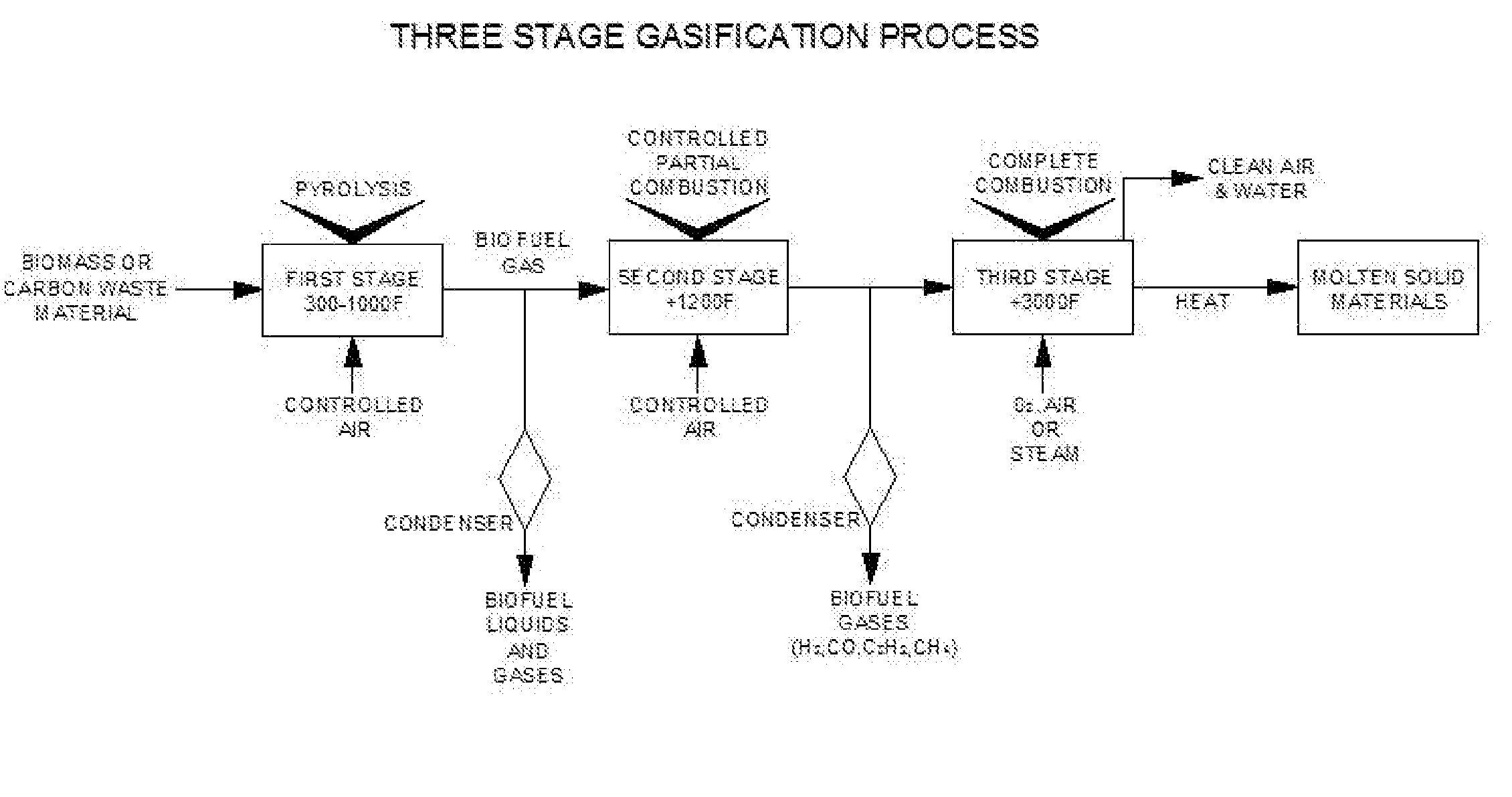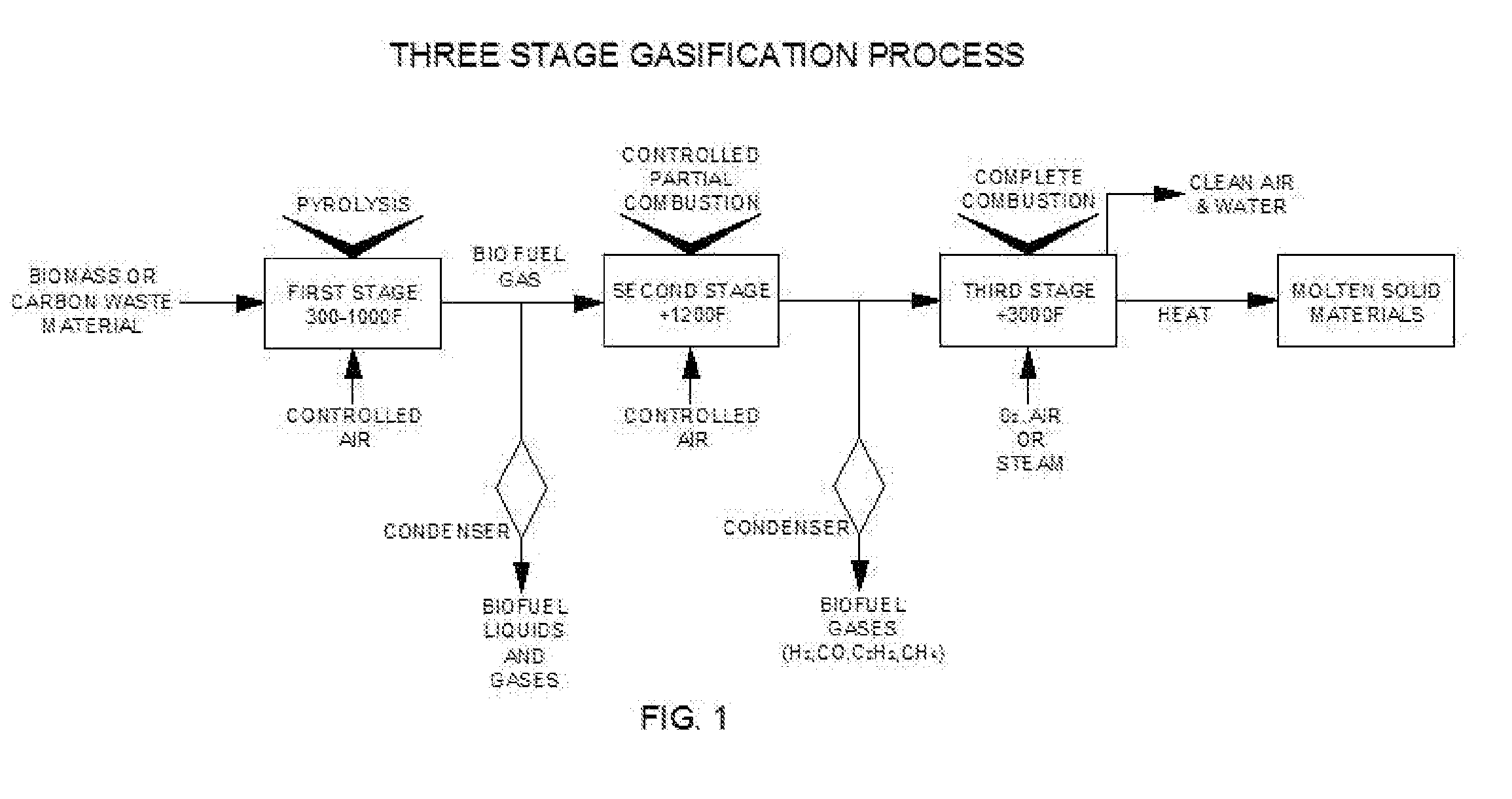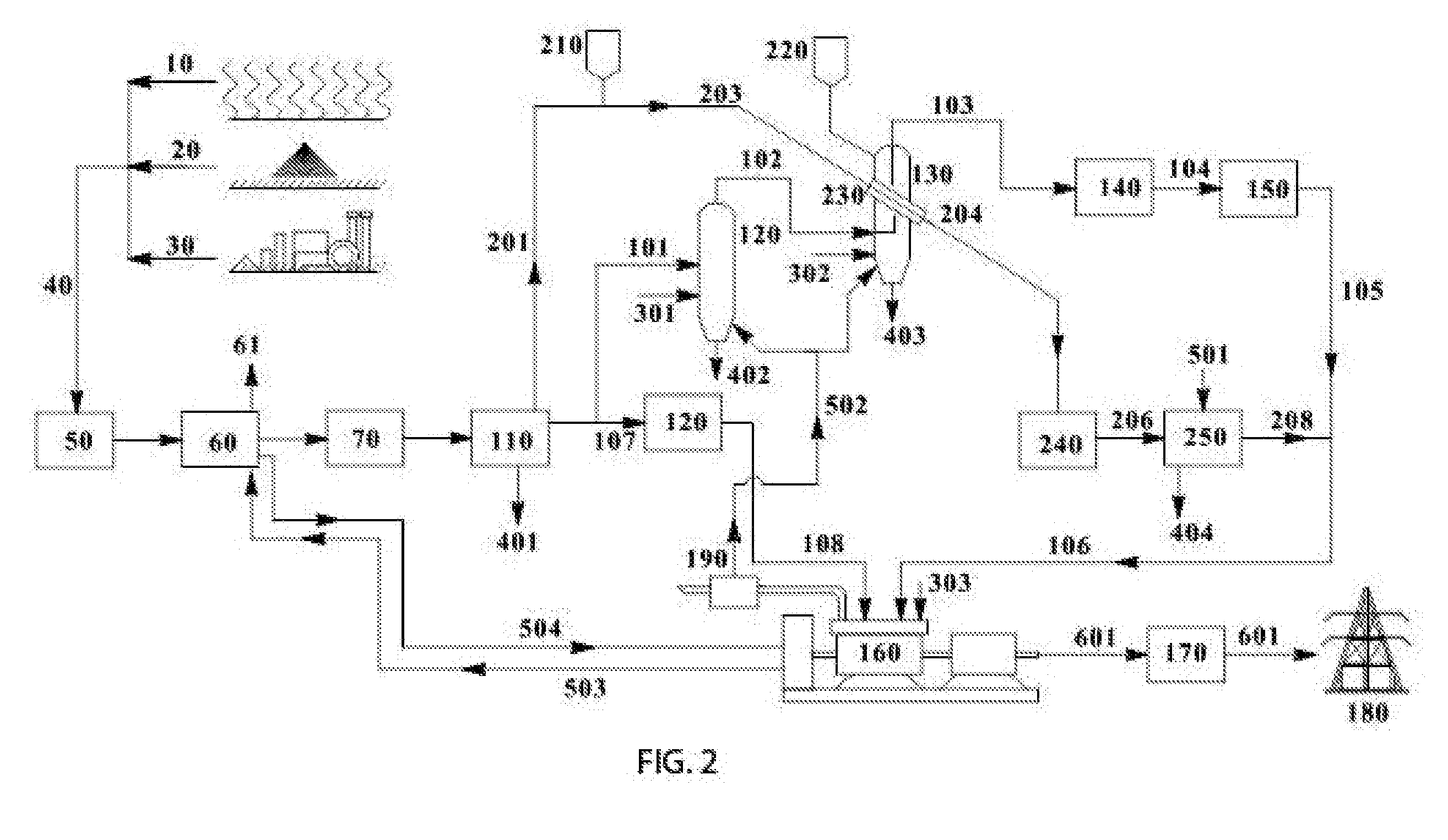Three-Stage Gasification - Biomass-to-Electricity Process with an Acetylene Process
a biomass-to-electricity and acetylene technology, applied in the field of three-stage gasificationbiomasstoelectricity process with acetylene process, to achieve the effect of more thermal efficiency
- Summary
- Abstract
- Description
- Claims
- Application Information
AI Technical Summary
Benefits of technology
Problems solved by technology
Method used
Image
Examples
Embodiment Construction
[0014]A process and system for generating biopower and / or waste-to-energy power, producing solid, liquid, and gaseous carbon based byproducts using biomass or environmental wastes is described in detail herein with reference to FIGS. 1 and 2. The process has a potential impact on the agricultural, forestry, energy consumption, and the environment in the United States and the world.
[0015]The art of carbonization of biomass and carbon waste material such as wood waste has been well established in history. Using fixed bed and firebox contained chambers or kilns for gasification of wood to produce charcoal is the primary example for this art. Prior to the petroleum and chemical revolution, the gasification and condensation of this gaseous produced marketable gases, tars, liquid, and charcoal for the world. This process will bring back the old art of producing byproducts and generate electricity from acetylene plus low BTU biogases. Storable calcium carbide fuel is one of the most value ...
PUM
| Property | Measurement | Unit |
|---|---|---|
| temperature | aaaaa | aaaaa |
| temperatures | aaaaa | aaaaa |
| thermal conversion-to-electricity efficiency | aaaaa | aaaaa |
Abstract
Description
Claims
Application Information
 Login to View More
Login to View More - R&D
- Intellectual Property
- Life Sciences
- Materials
- Tech Scout
- Unparalleled Data Quality
- Higher Quality Content
- 60% Fewer Hallucinations
Browse by: Latest US Patents, China's latest patents, Technical Efficacy Thesaurus, Application Domain, Technology Topic, Popular Technical Reports.
© 2025 PatSnap. All rights reserved.Legal|Privacy policy|Modern Slavery Act Transparency Statement|Sitemap|About US| Contact US: help@patsnap.com



